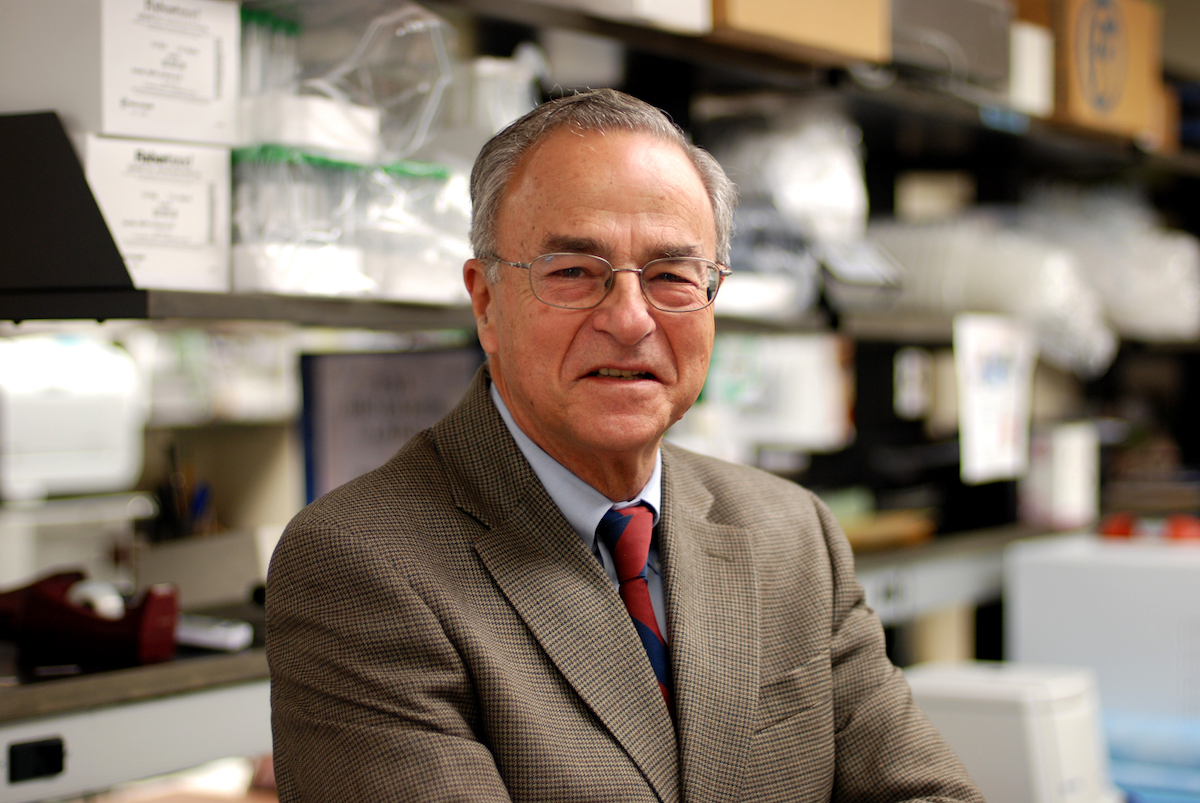Normally, it is dogs who come to the aid of humans when we go blind. However, within the confines of the School of Veterinary Medicine at the University of Pennsylvania, the opposite also proves true: scholars have recently opened a new path toward prolonging vision for canines.
Building on a previous study which broke scientific dogmas and proved that it was possible for photoreceptor cells in mammals to divide, Dr. Gustavo Aguirre and a team of scholars have now found similar results in two more types of dog blindness: RCD-1 and X-linked retinitis pigmentosa.
The story goes back to 2011, when an M.D./Ph.D. student from Hungary named Agnes Berta came for a nine-month lab rotation at Penn. She was given a simple project: to evaluate the speed of cell death in sample tissue from Norwegian elkhounds with early retinal degeneration (ERD), a rare type of canine blindness.

Dr. Gustavo Aguirre. (Courtesy photo)
Dr. Aguirre carefully double-checked that the results of her study were correct (“I don’t trust numbers that are just handed to me in an Excel spreadsheet; I’d rather use my handheld calculator,” he said) and confirmed the puzzling revelation: Even though the cells were dying quickly, the retina didn’t change in thickness as expected when there is cell death.
He asked Berta for an explanation and she suggested that the cells might be dividing, which at the time was a controversial idea. “She was able to prove that there’s a compensatory cell division going on at the same time that the cells are dying,” he said.
Upon this discovery, the team set out in 2012 to find out if this was also true in retinal cells with RCD-1 and X-linked retinitis pigmentosa — the latter of which is one of the most common cause of inherited blindness in humans. To the team’s delight, all diseases showed very robust cell division in the photoreceptor cells.
The discovery — published in the BMC Genomics journal —opened a door that leads to many possible paths. One of them is figuring out how to activate genetic “switches” that may trigger cell division in the hopes of extending eyesight in affected animals. Maybe, even in humans.
Applications of this discovery on humans, however, are still far off. Human retinal tissues are very limited for analysis and many of the diseases occur over a very long time period, limiting the practicality of similar studies.
In spite of this, Aguirre — a researcher with four decades of academic experience on his side — remains hopeful.
“For me, this discovery was like turning on a light in a different research area,” he said. “We have been successful at curing dogs through gene therapy that is then translated to human clinical trials but, since gene therapy isn’t going to cure everything, the more tools we have the more possibilities we have to cure diseases or slow down their advancement.”
Companies:
University of Pennsylvania
Join the conversation!
Find news, events, jobs and people who share your interests on Technical.ly's open community Slack

Philly daily roundup: Minecraft in a Philly school; PTW kicks off; Tech and art happy hour

Philly daily roundup: Philly's top innovation leaders; City buildings go solar; PTW kicks off on Friday

Philly daily roundup: UPenn's AI master's degree; Advice for EDA Tech Hubs; Last day of ACP

